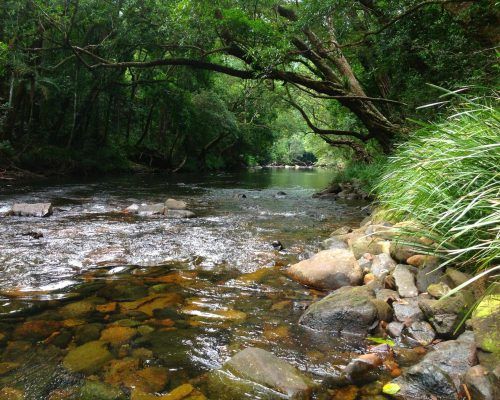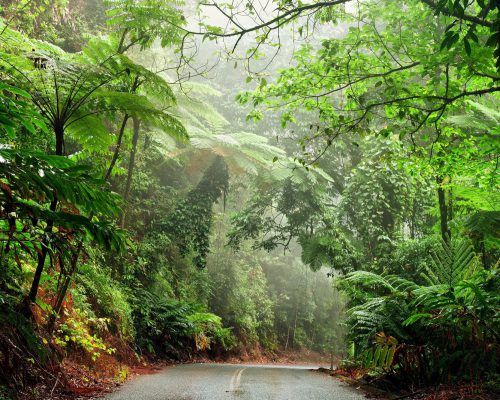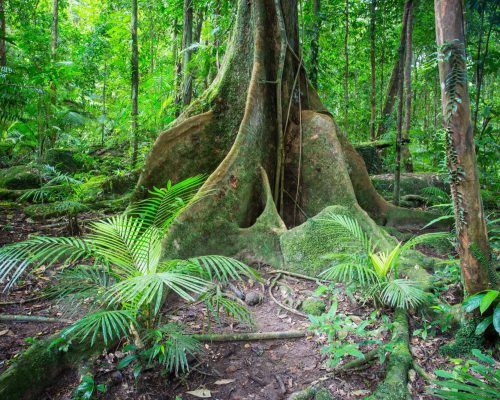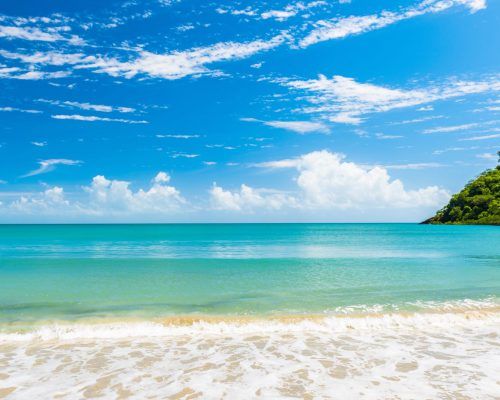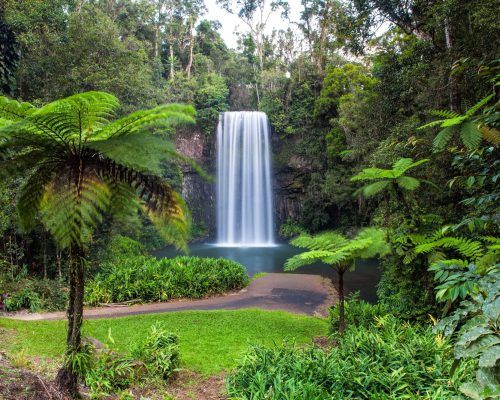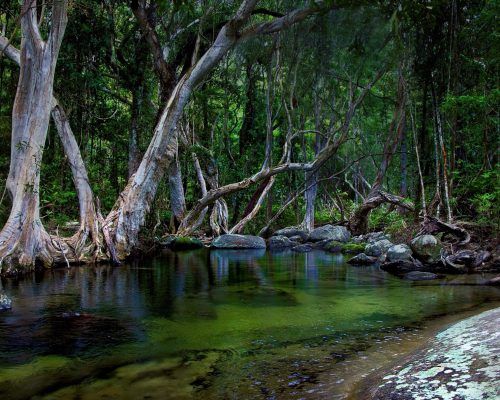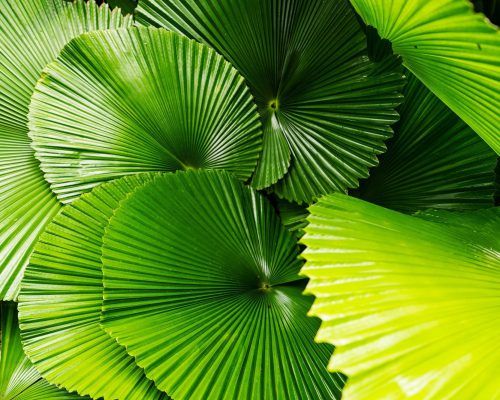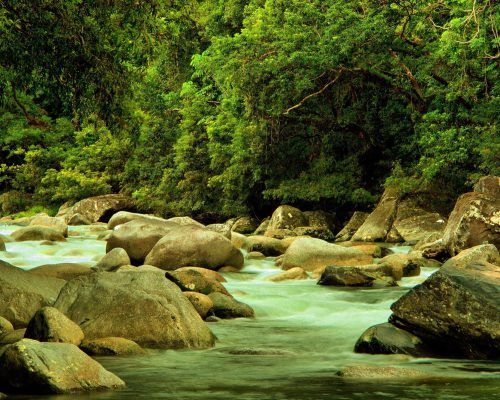Located in the heart of the Daintree Rainforest, Noah Creek is entirely world heritage listed, being one of the largest privately owned world heritage reserves in the Daintree Rainforest – Wet Tropics Area and covering approximately 600 acres including Mount Emmett.
Some of the trails in Noah Creek offer exclusive access into untouched lowlands and mountainous rainforest areas. With some endangered species of plants and animals only known to this valley and the adjacent and nowhere else in the world, it is a very special place and hence a key piece of world heritage reserve.
Stories of local indigenous people tell that the valley was originally inhabited by a tribe that believed that the valley was the birth of their world. The meandering creek representing the serpent in the creation stories, with the head represented by the island (Struck Rock) just off the coast of Thornton’s Beach. Numerous artefacts have been located on the property such as cutting stones, grinding stones and various other tools. Significant sites also include the volcanic bouncing stones at the point north of Thornton’s Beach, well known as sacred ”women’s place” and talk of a ceremonial aboriginal corroboree dance ground on the Mount Emmett table top plateau.
Unfortunately the bouncing stone beach is now closed to the public. Too many stones were being souvenired. Interestingly many returned after stories of bad luck were attributed to their removal. Even today, the valley, especially inland, is considered to be a highly spiritual place. Local Kuku Yalanji people have told us that their people will not enter the area until special ceremonies are conducted asking permission for entry from their ancestors.
Prior to the 50’s access to the area was very restricted, no roads existed and there was no ferry over the Daintree River. The area virtually untouched with the exception of some small scale logging of cedar trees. Access and removing of timber out was by horse cart and barges by sea to the nearest rail transport at Port Douglas. Amazingly remnants of these small barge docking operations are still visible at the mouth of Noah Creek.
Joan and Ray Hancock were the first people to take up a ”Special Lease” at Noah Creek. The saw mill at Noah Creek was built by the Hancock’s. The old Lister diesel engine driving a belt to turn the saw and the train tracks used to manually run bogey carts pushing logs through the cutting saw.
The Hancock’s also tried their hand at cattle farming however the harsh damp wet environment meant the venture was of limited success.
The Hancock’s sold the lease in the early 70’s. At this time only a small car ferry existed to cross the Daintree, taking approximately 6 cars. The dirt track from the ferry took around an hour and half to get to Noah Valley, with approximately a dozen farm gates to open and close between the ferry and Cape Tribulation. In places, 6 foot high guinea grass grew up the middle of the road.
David Heweston stumbled upon the Daintree Rainforest area and the Noah Creek property while backpacking up the East Coast of Australia in the 60’s. Having spent some time in New Guinea and having developed a passion for tropical rainforest, he met the Hancock’s and immediately felt connected to the Noah Creek property. After some time the Hancock’s decided to move on and in the early 70’s they sold the lease to the Heweston’s.
In the late 70’s and 80’s the attitude towards clearing and subdivision of this area had completely turned around to preservation. This was the time of the infamous blockade at Cape Tribulation and introduction of world heritage reserves and land buy back schemes. Noah Creek was included in the World Heritage Listing in 1988 and some portions sold back to become National park soon after.
Tony’s Tropical Tours is proud to be able to showcase this very special part of the Daintree Rainforest to our guests. Our relationship with Noah Creek world heritage listed private property surpasses 10 years and our exclusive private rainforest walk is still unearthing new and interesting and unknown species of flora.
We welcome you on an all day tour visiting this world heritage listed private property in the heart of the Daintree Rainforest.
